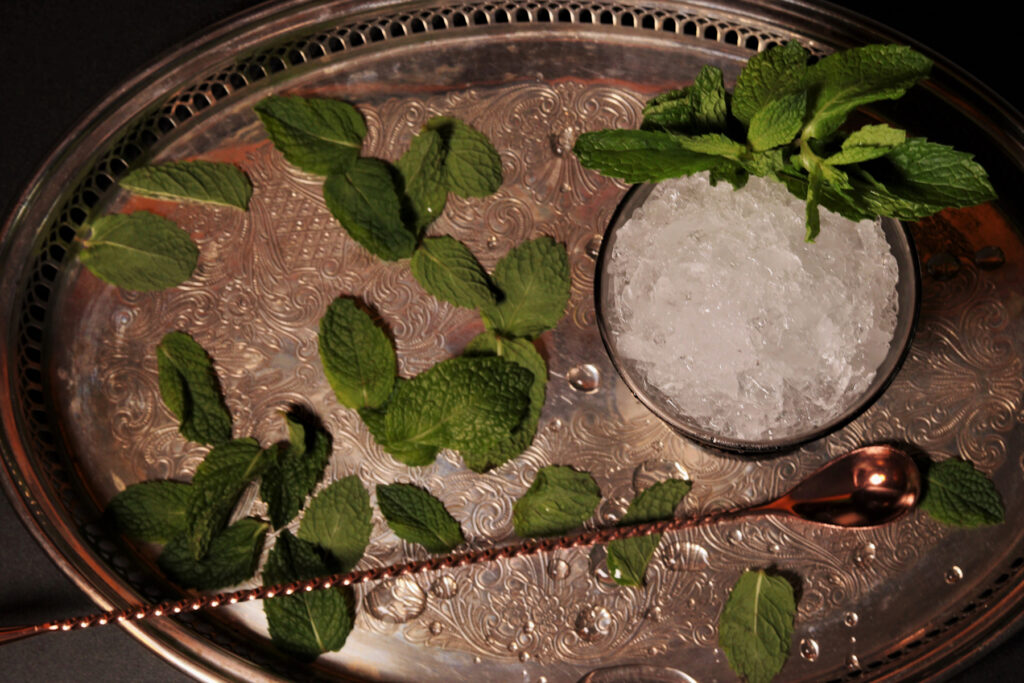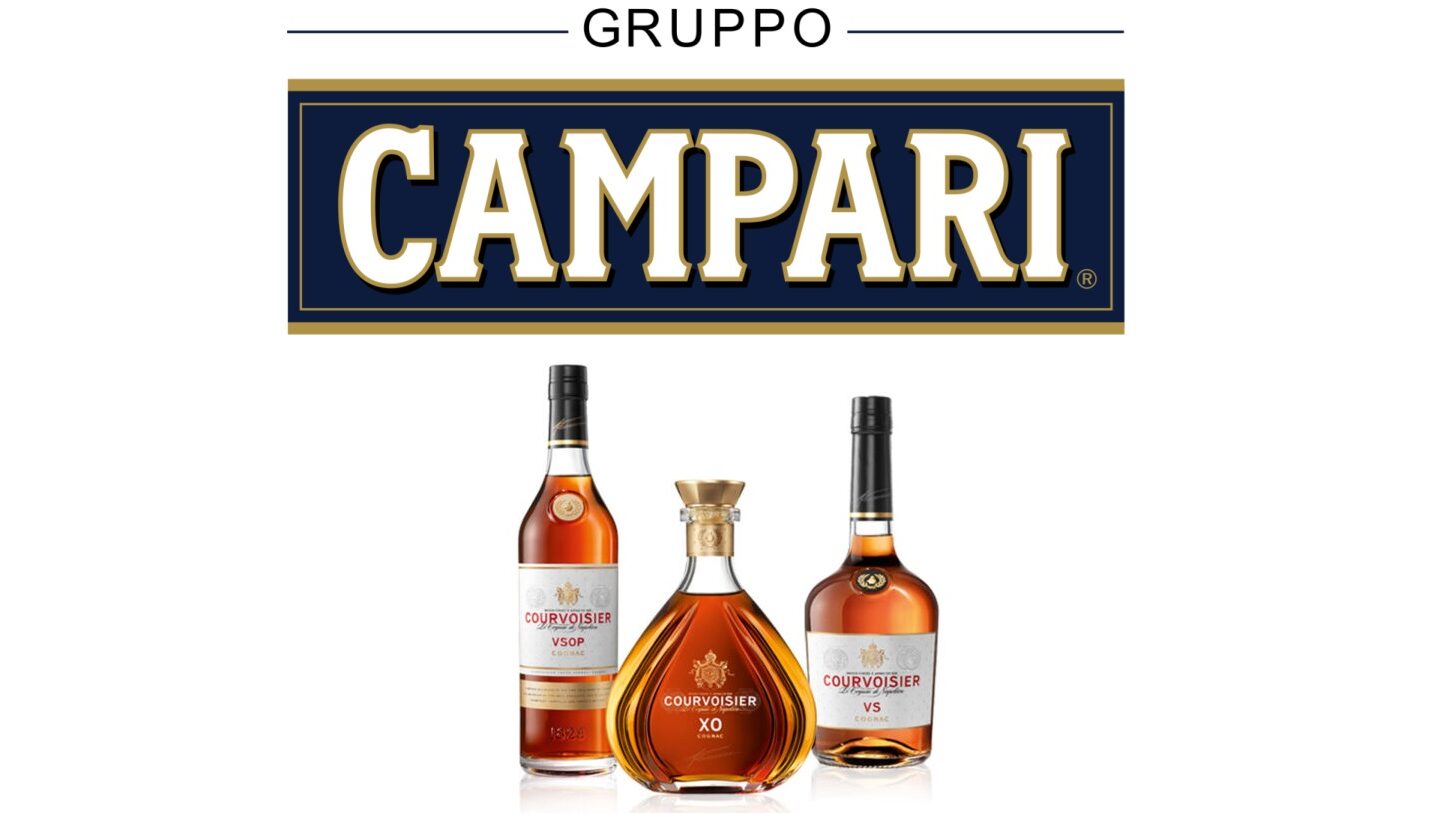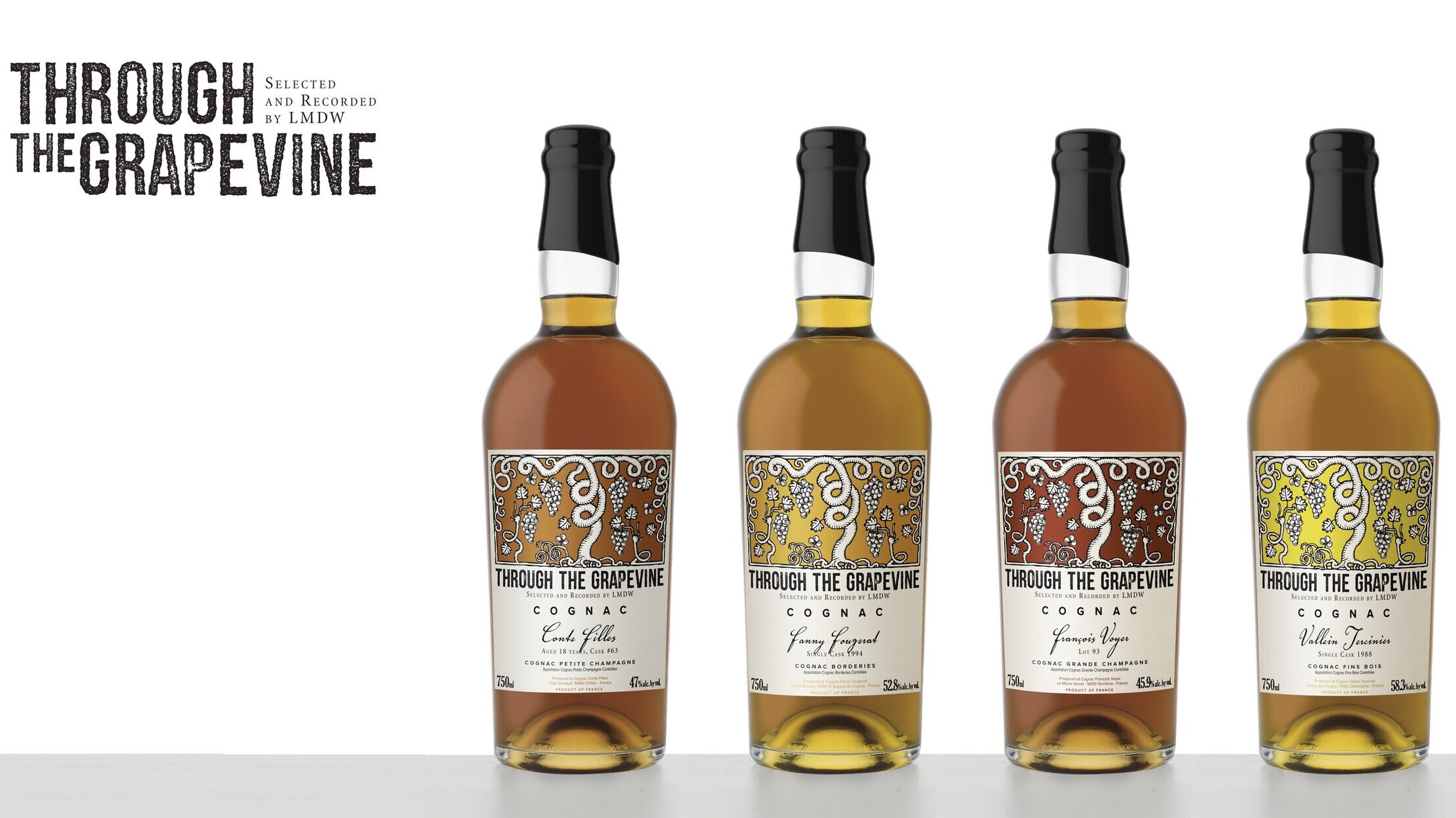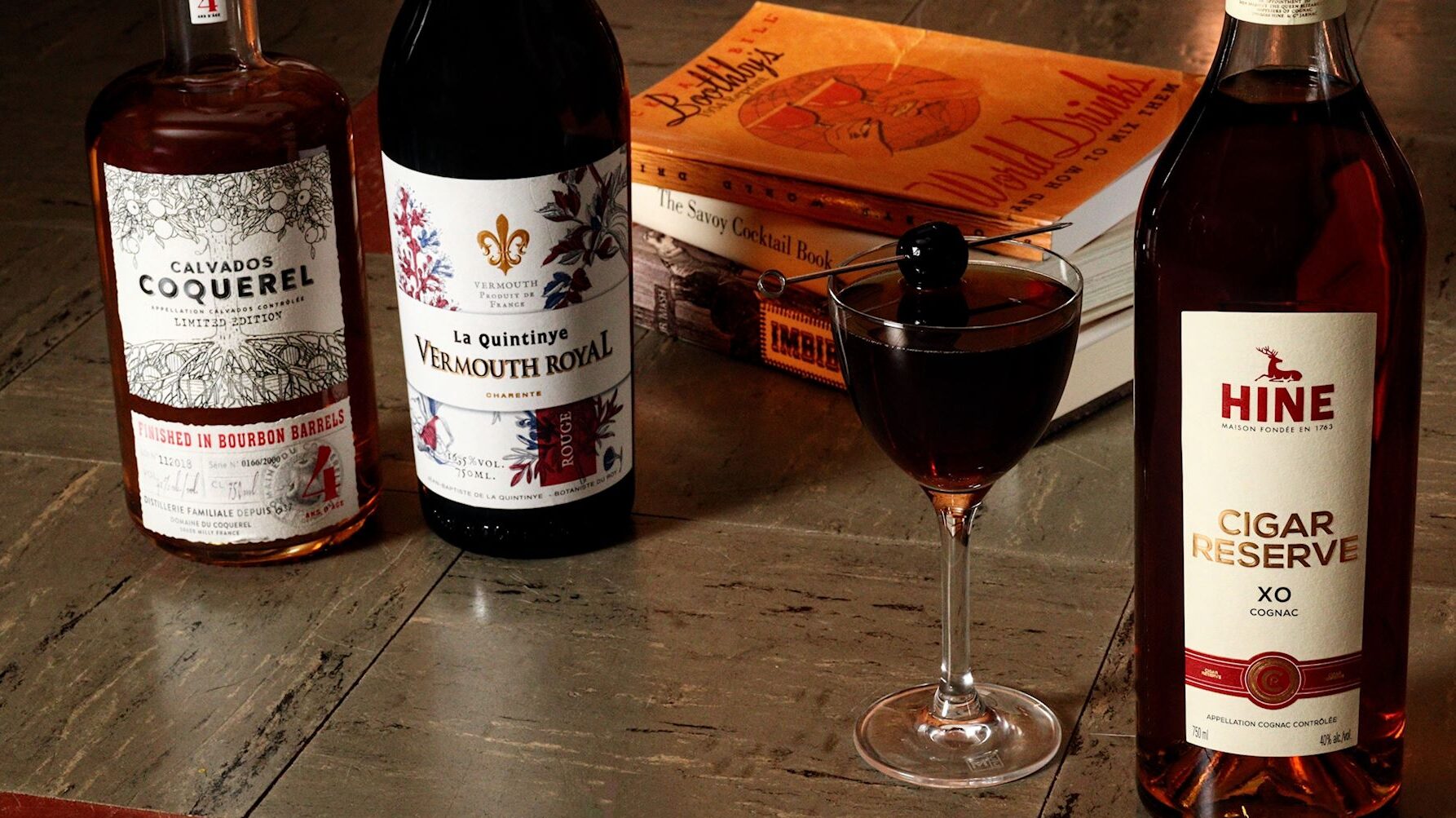Hold your horses, bourbon fans! Your ice cold, minty American whiskey concoction that sells nearly 120,000 units every Kentucky Derby weekend isn’t what you think it is…or was? What you’re used to imbibing is actually the newest version. If we go old school with it, the Mint Julep was originally made with Cognac. Like many classic cocktails, whiskey took over when Cognac suffered from the phylloxera epidemic in the 1870’s. Without Cognac available, it fell to the wayside. The highball, Sazerac, and Mint Julep, among others, all had their humble beginnings with Cognac.
The word ‘julep’ actually derives from a Persian word, Golâb, that means rosewater. Juleps used to be used for medicinal purposes, like so many other alcoholic beverages we consume today. It was a concoction that contained many herbs, including rose pedals, infused into a low alcohol spirit with loads of sugar. It wasn’t until it found its way to America in the 18th century that it took on new life.
The Julep on American Soil
The first printed mention of a Julep (sans mint) in America came in the late 1770’s according to cocktail historian David Wondrich. However, it was still far removed from what we know it to be today, made with rum, water, and sugar. Pretty basic, and boring, stuff. But by the 1830’s, the Mint Julep not only took shape, but exploded in America. Rum from the primitive Julep version was replaced with French brandy as the base. Mint was added, and even seasonal berries and fruits were used for the garnish.
Something really cool is that in addition to all these luxurious products being used in this cocktail, the Mint Julep is also one of the first (if not THE first) cocktails to require specific ice to create it. Shaved, crushed, pebble, whatever you want to call it. You needed it to make a Mint Julep. This added to the allure of such a fine cocktail. The people demanded sophistication and they got it in spades with the Mint Julep.
Where Do We Go From Here?
In Jerry’s Thomas’s bartending book ‘Bartenders Guide: How To Mix Drinks’ in 1862, he actually lists five different Julep’s, the Mint Julep being the first entry. It’s listed as containing Cognac, shaved ice, mint, sugar, and several dashes of Jamaican rum as the ingredients and garnished with seasonal fruits and berries and a “forest” of mint. Notice the guest appearance of rum. The other variations included a Brandy, Gin, Whiskey, and Pineapple Julep. The only difference were that they didn’t have any fruit garnishes. The Pineapple Julep, however, used gin, raspberry syrup, Maraschino, and sparkling wine. Yum!
I’ll leave you with this wonderful quote from novelist Captain Frederick Marryat. According to Thomas, he helped spread the popularity of the Mint Julep to Britain in the late 1830’s.
“I must, however, descant a little upon the mint-julep, as it is, with the thermometer at 100°, one of the most delightful and insinuating potations that ever was invented, and may be drank with equal satisfaction when the thermometer is as low as 70°. There are many varieties, such as those composed of Claret, Madeira, &c.; but the ingredients of the real mint-julep are as follows…Put into a tumbler about a dozen sprigs of the tender shoots of mint, upon them put a spoonful of white sugar, and equal proportions of peach and common brandy, so as to fill it up onethird, or perhaps a little less. Then take rasped or pounded ice, and fill up the tumbler. Epicures rub the lips of the tumbler with a piece of fresh pine-apple, and the tumbler itself is very often incrusted outside with stalactites of ice. As the ice melts, you drink…They are, in fact, like the American ladies, irresistible.”
(Thomas, 1862, p. 84)
This version Mr. Marryat had seemed to have some extra fruit added in the mix, such as peaches and pineapple. I think we can all agree that that sounds absolutely delicious.
Now, let’s get mixing, shall we?
• • • • •
Cognac
There are two really good options here. First, and most practical, would be to use a very bold flavored VSOP. Something heavy on the barrel influence, lots of baking spices, and some of those deeper, richer flavors like vanilla and caramel. Think Remy 1738, Gautier VSOP, or even Hennessy Privilège. Avoid a lighter bodied expression in a Mint Julep. The crushed ice chill and sugar can easily cover the softer, young eaux de vies and their subtleties.
The second option, which is my personal favorite, is using a higher proof Cognac as they would have used in the 19th century. Pierre Ferrand 1840 was created to fill that purpose at an affordable price. The higher the proof of the Cognac (or any spirit), the better ‘bite’ you’ll get in the cocktail. It can cut through heavy dilution and sugar syrups really well. If you’d really like to get at it, using any of the Through the Grapevine expressions would be a real treat. The Fanny Fougerat Single Cask 1994 Borderies certainly didn’t make a bad Mint Julep at all!
Sugar
To keep things moving down the traditional path, stick to using plain simple syrup. A 2:1 ratio is ideal to give the Mint Julep a little more body. When a white sugar syrup is used, flavor isn’t being added to the drink, just a sweet element to balance out the spirit. Demerara or brown sugar syrup could work well, too, but then you start adding molasses and earthy undertones to your cocktail. Certainly, that’s not a bad thing at all, but the essence of a Mint Julep is bright and refreshing, which to many palates, the less processed sugars don’t fit that profile.
Rum
As Jerry Thomas wrote, one of the earliest recipes contained a little bit of Jamaican rum dashed on top. And I, for one, am not one to argue with such a man. In fact, I say let’s forget the dashes all together and raise the stakes to a ½ oz of rum. The flavor profile of many Jamaican rums include what is best described as ‘funk.’ These high ester, richly aromatic rums really stand out incredibly well in many cocktails. The Mint Julep is no exception.
By floating the rum over the top of your Julep, this is going to slowly incorporate the flavors of the rum over a period of time. So, your first sip will have an intense mint and Cognac flavor to it. But by the end of your cocktail journey, you’ll experience a nice, smooth Jamaican rum influence offering some leather, smoke, and overripe fruits. While an unaged expression like Wray & Nephew works splendidly, going for something with age on it is a solid option, too. Smith & Cross or Hamilton Pot Still are stellar examples. Are you going to use an overproof Cognac? Treat yourself and use an overproof Jamaican rum, as well, like Hampden Estate. You’ll thank me later.
Mint/Garnish
The most commonly used mint in any bar across the globe is going to be peppermint. It’s the go-to mint for any cocktails calling for this vibrant herb. Spearmint tends to be less pungent and sweeter, whereas peppermint is more aromatic. This is why it works the best in cocktails. The richer oils in the leaves incorporate into the drink better and offer us their minty goodness. Slapping the mint leaves before you drop it into your glass helps to burst the capillaries in the veins and release those flavorful oils. Do the same thing when you garnish this cocktail. Take 2-3 sprigs and gently tap them on the back of your hand before placing them in the cocktail. You should immediately notice the bright mint smell in the air around you. Feel free to experiment with different herbs or mint varietals.
Glass
You need a classic Julep cup to make this drink. Yes, of course you don’t NEED one, but much like people wanting a copper mug with their Moscow Mule, the Julep cup is a necessity to many (myself included). Practically speaking, the metal vessel helps insulate the cocktail and keeps your drink at a low temperature which prevents over dilution. It creates that iconic frost around the outside of the glass which lets you know you’ve done your job correctly and that, “Hey, this is one cold drink!” Also, the beautiful filigree often found around the top and bottom edges of these glasses just makes you feel like something special.

The Recipe
2 oz (60 ml) VSOP Cognac
.33 oz (10 ml) 2:1 simple syrup
10-12 mint leaves
.5 oz (15 ml) Jamaican rum
Slap the mint leaves between your hands and drop them into a Julep cup. Add the simple syrup and, using a muddle, gently press the mint in a twisting motion to express all the oils.** Add your Cognac and fill the Julep cup half way with crushed ice. Churn the ice with a bar spoon until you see a light condensation on the outside of the glass. Add more ice, almost to the top, and repeat until a frost forms. Cap the top of the Julep cup with a final mound of crushed ice. Slowly pour the rum over the top of the cocktail. Garnish with mint sprigs.
**Pro tip: If you hold the cup on its side and drag the mint/simple around the edges of the cup, you’ll get more oils evenly distributed through the cocktail.**





